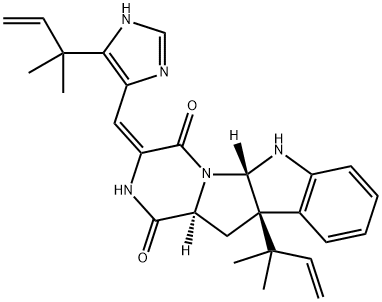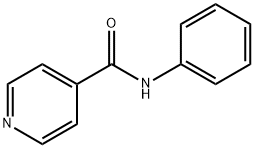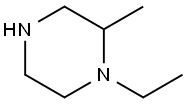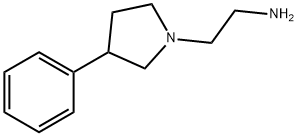RoquefortineC(NSC292134) , 98% , 58735-64-1
Synonym(s):
2H-Pyrazino[1′,2′:1,5]pyrrolo[2,3-b]indole-1,4(3H,5aH)-dione, 10b-(1,1-dimethyl-2-propen-1-yl)-6,10b,11,11a-tetrahydro-3-(1H-imidazol-5-ylmethylene)-,(3E,5aS,10bR,11aS)-;Roquefortine from Penicillium roqueforti
| Pack Size | Price | Stock | Quantity |
| 1mg | RMB4486.40 | In Stock |
|
| others | Enquire |
PRODUCT Properties
| Melting point: | 202-205℃ |
| Boiling point: | 768.3±60.0 °C(Predicted) |
| Density | 1.37±0.1 g/cm3(Predicted) |
| storage temp. | -20°C |
| solubility | chloroform: soluble1mg/mL |
| form | White to off-white solid. |
| pka | 11.10±0.40(Predicted) |
| color | White to off-white |
| biological source | Penicillium roqueforti |
| Stability: | Hygroscopic |
Description and Uses
Roquefortine C is a mycotoxin that was first isolated from a strain of P. roqueforti, a species of Penicillium commercially used to ripen blue-
Roquefortine C is a potent tremorgenic mycotoxin originally isolated from Penicillium roqueforti in 1975 in Japan. Parallel research by Scott and colleagues lead to the structure elucidation of roquefortine C as an unusual diketopiperazine formed by coupling a prenylated tryptophan and histidine. Roquefortine C was subsequently found to be produced by a diverse range of fungi, most notably Penicillium species. Roquefortine is an important mycotoxin as low levels can be found in foodstuffs.
Safety
| Symbol(GHS) |  GHS06 |
| Signal word | Danger |
| Hazard statements | H301+H311+H331 |
| Precautionary statements | P280 |
| Hazard Codes | T |
| Risk Statements | 23/24/25 |
| Safety Statements | 22-36/37/39-45 |
| RIDADR | UN 2811 6.1/PG 2 |
| WGK Germany | 3 |
| RTECS | UQ4730500 |
| HS Code | 2941900000 |
| Hazardous Substances Data | 58735-64-1(Hazardous Substances Data) |






